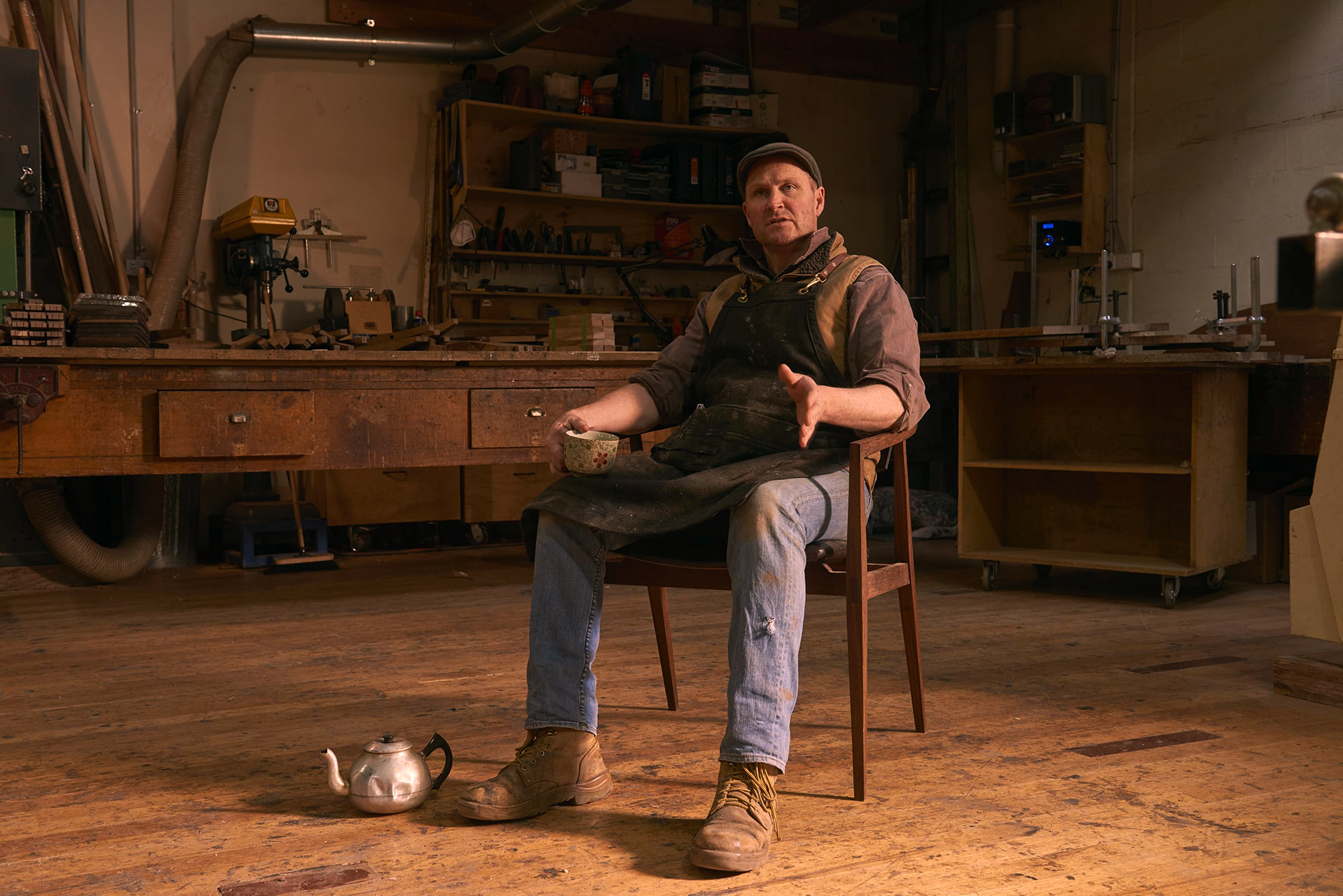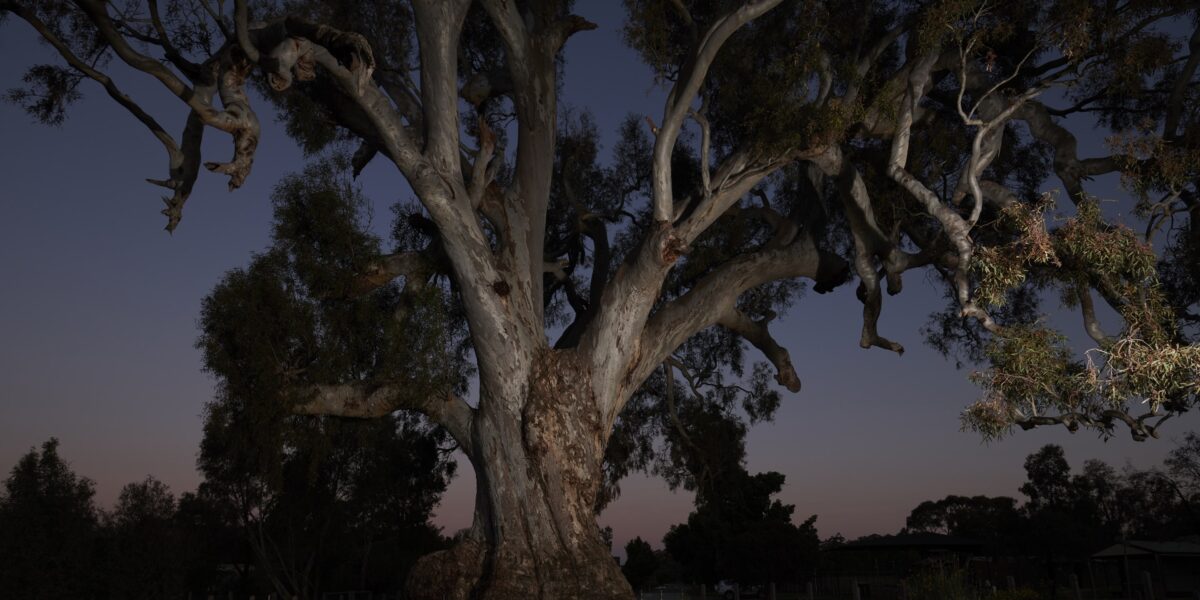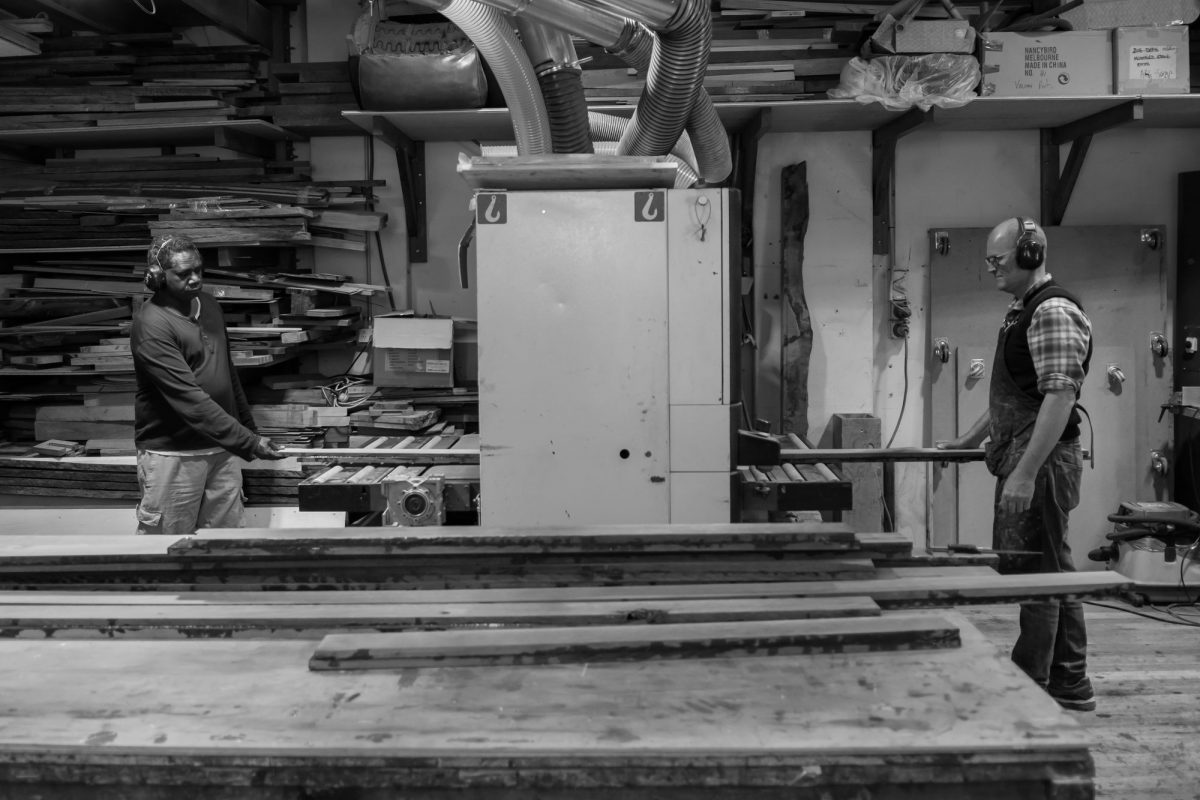

Image: Fred Kroh
Damien Wright is an award-winning furniture designer and craftsman. Working almost exclusively with recovered Australian timbers sourced directly from farmers and millers across Australia, Damien is acclaimed for his unique ‘whole tree’ approach to furniture design — utilising indigenous hardwood species which are not traditionally used to make furniture — and employing rare joinery techniques such as blind-mitred dovetails and thick veneering.
Where did it start?
I have always felt happiest with my head, heart and hands engaged in the making.
Growing up I shadowed my father George Wright as he fixed and built and made and grew. He fixed our cars, bikes, radios, washing machines, anything and everything. He built fences, sheds, boats, houses, gardens, gifts, tools and toys. And he grew a family. I learnt from Dad. Building things became something that I loved and was good at.
Something that I got a lot of affirmation and recognition for.
I studied politics and history at university and loved that too. When I finished university I was drawn back to what I felt good doing which was making. I started making furniture in 1991. And have not stopped.
I studied my craft and taught myself technique. And practiced and practiced and practiced. I wanted and needed to learn my craft. To gain knowledge and skill. To control my actions. To figure things out. To find the moment when you are in tune with yourself. And to think where my work fits into a historical, political and cultural landscape.

Image: Fred Kroh
Why wood?
I have a feel for wood. I love the warmth of it in the hand. I love the smell and touch of wood. I love its endless material, environmental, political and cultural complexity.
Wood, timber and trees are at the heart of the colonial settler experience. From forestry to furniture its an elemental and primary relationship to imperialism.
I have sought to use timbers that challenge the colonial cannon of wood craft. From eucalyptus to desert timbers to 10,000 Ancient red gum. All part of a conversation about place, time and belonging.
A national conversation. A conversation about imperial power, colonial myopia and violence. A conversation that is and has been inside every work.
This passion has led to collaborative projects.
Bala Ga’ Lili (Two Ways Learning) is a cross cultural collaborative project with Bonhula Yunupiŋu.
Bonhula and I met in 2010. We worked together on his home of Gunyangara in North East Arnhem land setting up a furniture workshop for his Gumatj clan. Dharpa Djama Studio. (Wood work studio)
We became family. Inevitably I had to return to Melbourne and we parted ways. Bonhula and I were not done. He came to Melbourne regularly and we would work together under the notion of Bala Ga’ Lili (Two Ways Learning).
We produced works in wood, in Eucalyptus, that reflected us, that are us. We are the subject of our examination, of our collaboration. The work is very personal. It is of and about us. About two men of vastly different backgrounds moving through life together.

Image: Bernie Wright
Why keep doing it?
There is a moment for a craftsperson. Where design, skill, execution and opportunity all come together. Doesn’t matter how heavy or noisy or dusty the moment is, there is an interior silence. A frictionless glide where everything is in tune. It is a beautiful thing. Making is addictive.
I will keep designing and making as long as I can. I need it more than it needs me.



